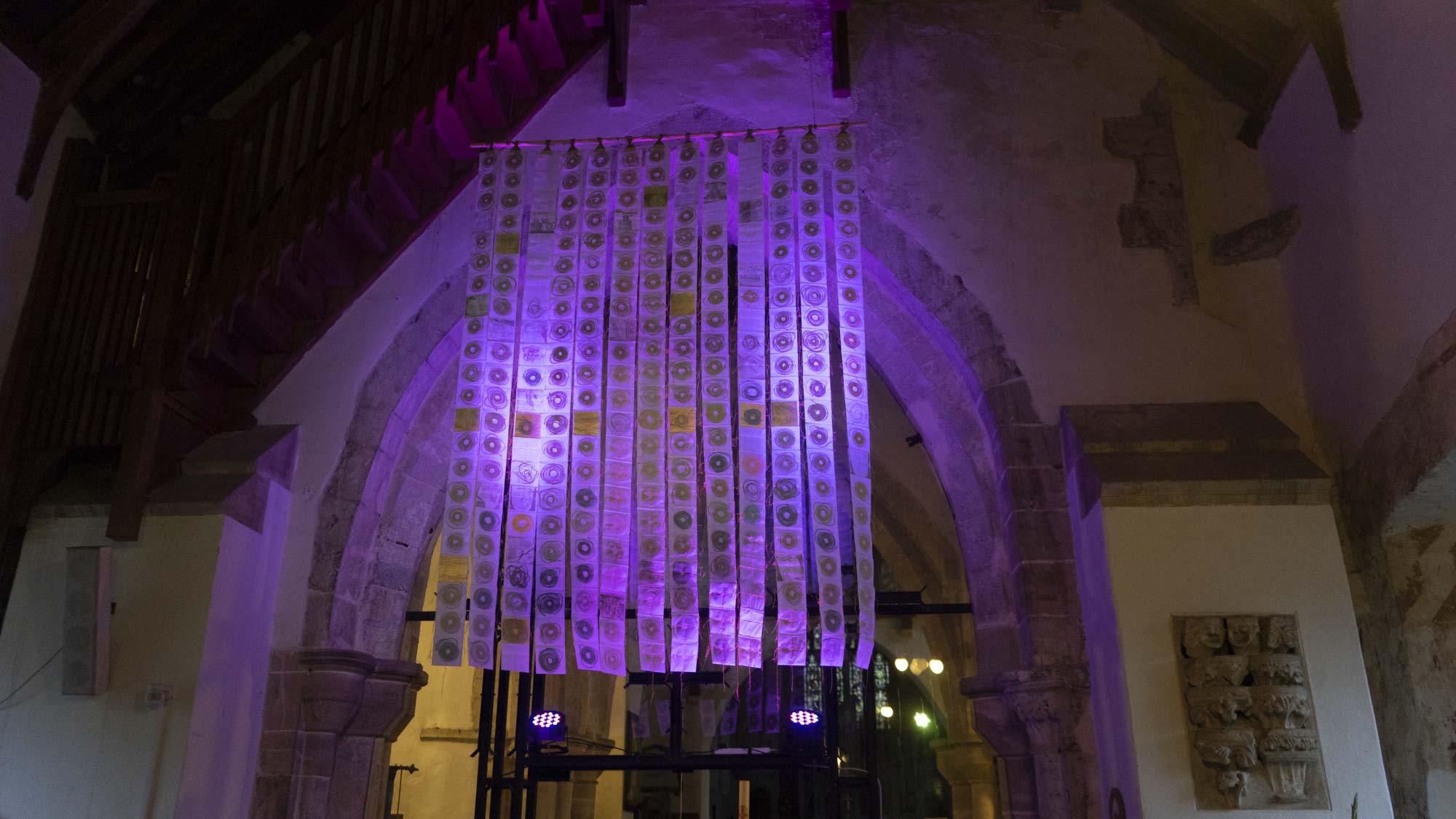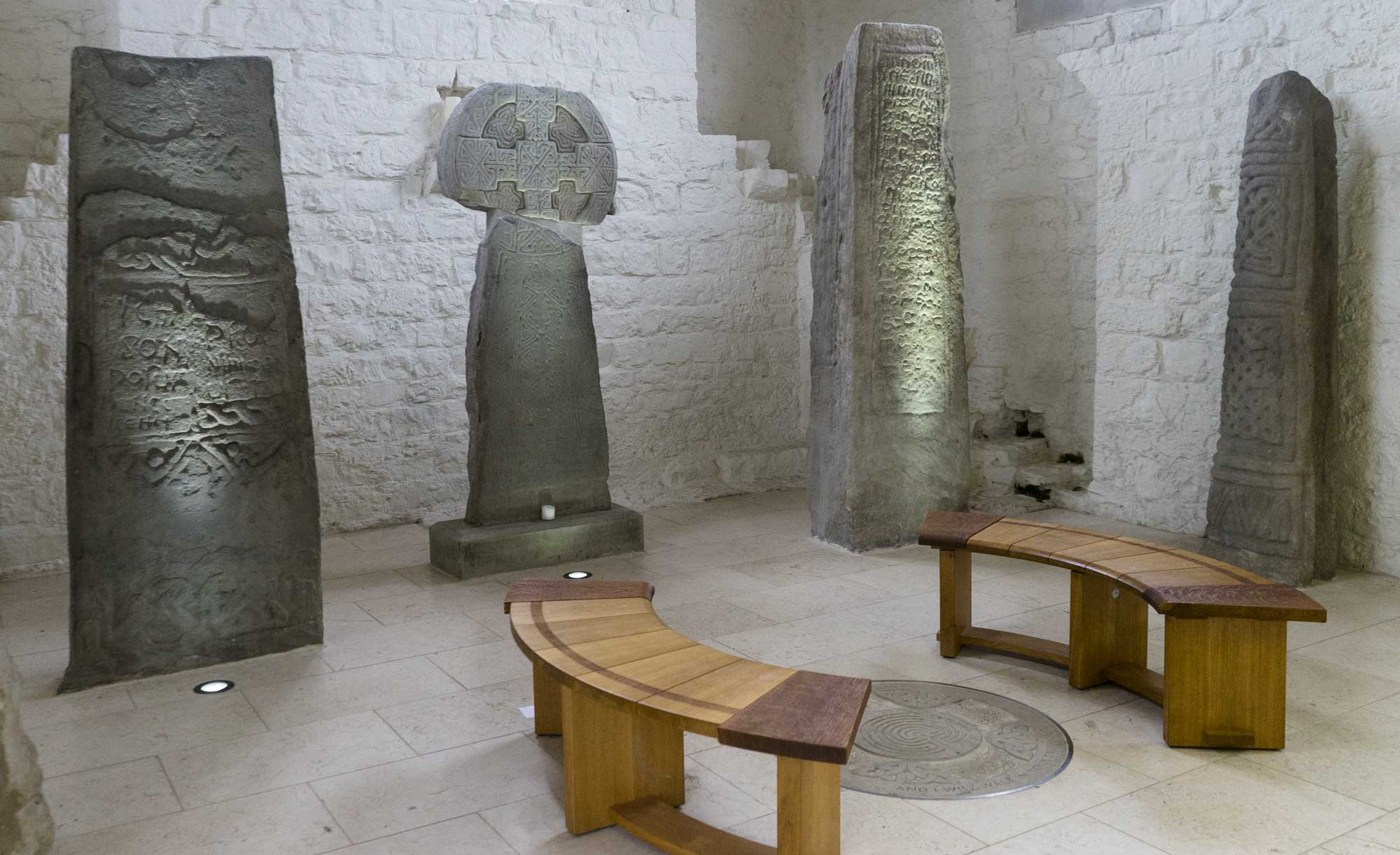St. Illtud’s in Llantwit Major – The Cathedral of the Vale
Last week the exhibition ‘Re-Making Maps of the Mind: Medieval and Modern Journeys’ found its way to somewhere special indeed. A place where for over 1500 years people have been coming to pray and ‘give praise’.
St. Illtud’s Church in Llantwit Major dates back to the 4th century, one of the oldest Christian sites in the UK. There’s been a site of learning and worship here continuously since then, and you can see and hear this in the building itself – from its Celtic stones and medieval wall paintings to the music recordings they were making there just last week. It is also believed to be Britain’s earliest centre of learning since Illtud, a Celtic monk and teacher, founded his monastery here in about the year 500. It became known as “the University of the saints of the early Celtic church”.
The St Thomas Way – A Pilgrimage through Time and Space
Geographically along St Thomas Way, Llantwit Major is a place between Ewenny and Llancarfan, both of which are fairly off the beaten track. Llantwit Major is, well, more major, I think, in terms of current numbers of visitors – perhaps the beach and the town’s other attractions help. People have been coming and going through this landscape for thousands of years. When the Romans arrived and gradually brought Christianity to Wales, the Vale of Glamorgan was an important rural settlement area for them. Christianity was kept alive in the centuries that followed – the times of heathen invaders – by travelling, nomadic Celtic preachers known as ‘peregrini’ or ‘The Celtic Saints’. Many of their place names were called ‘Llan’, such as Llancarfan, which refers not just to the buildings, but to the community who lived, worked and worshipped there. At the time of St Illtud, there wasn’t a church as such in ‘Llanilltud’ – worship was mostly in the open air around a standing stone, but there was ‘a monastic school of over one thousand pupils—including, it is said, St David of Wales’. Scholars came from far and wide and when they finished their studies, they spread their knowledge far and wide too – from Llantwi Major west to Ireland, north to Iona and Lindisfarne, and south to Cornwall and Brittany.
In September 2018, the current St Illtud’s Church – ‘The Cathedral of the Vale’ – became part of the new Parish of the Glamorgan Heritage Coast – a 14-mile stretch of coastline which the Daily Mail described as “criminally overlooked”! This new larger parish includes Ewenny Priory Church, part of St Thomas Way, which I’m pleased to say will be the next stop on the exhibition trail during Advent and into 2019.
St Illtud’s Galilee Chapel
Stepping into this wonderful church at the west end, you enter the RIBA award-winning Galilee Chapel which in centuries past used to be the Lady Chapel and ‘Galilee’ – the chapel where the priest and clergy would robe before a service, Three enormous standing stones covered in beautiful patterns now welcome you into this space. They date from the 8th to 12th centuries when the Celtic Church in Wales was prevalent. One of them, the Samson Pillar, is thought to be the earliest inscribed standing stone in Britain (9th Century). The central stone is a beautiful Celtic Wheel Cross dedicated to Houelt, the King of Glywysing – the land between the River Taew and the River Usk. (Usk is also on the St Thomas Way). There’s a mini-Celtic labyrinth on the floor, emphasising the curves of the stones and the journey, yours, theirs and shared… Most of the times I’ve entered through this portal, I’ve also been greeted by a human being – a cheery hello from the Parish Office upstairs, or from Father Edwin Counsell who’s almost always smiling.
Inscribed in the circular labyrinth stone Psalm 86: 11:
‘Teach me your way o lord and I will walk in your truth’
The West Church
Walking on through into the ‘West Church‘, which was built by the Normans of Llantwit Major in the 13th century, this part was probably used as the parish church. Now people are encouraged to use the space for many things – and bring as many others into the extended church community here as possible. There’s a cafe vibe – free lunch on Fridays, tea almost always, Mother’s Union, a Toddler Church group, a little shop selling booklets, postcards and gifts, space for art exhibitions, concerts, poetry readings, bellringing (on Thursdays), and my personal favourite, Open Mic Night, where everyone is welcome to express themselves (It’s the 1st Friday of every month if you’d like to come!). It’s a Community Space in the true sense of the word. There’s another entrance here too, through the medieval porch, which is full of carvings of living creatures. St Iltud’s has a rota of Welcomers to meet visitors as they arrive and guide them on their way through the church.
On ‘Father Edwin’s Page’ of October’s Llantwit Major Parish Magazine:
“In a world where divisions and barriers are built all too easily, my prayer is for our churches to be places of love and generous welcome to everyone…no ‘ifs’ no ‘buts’.”
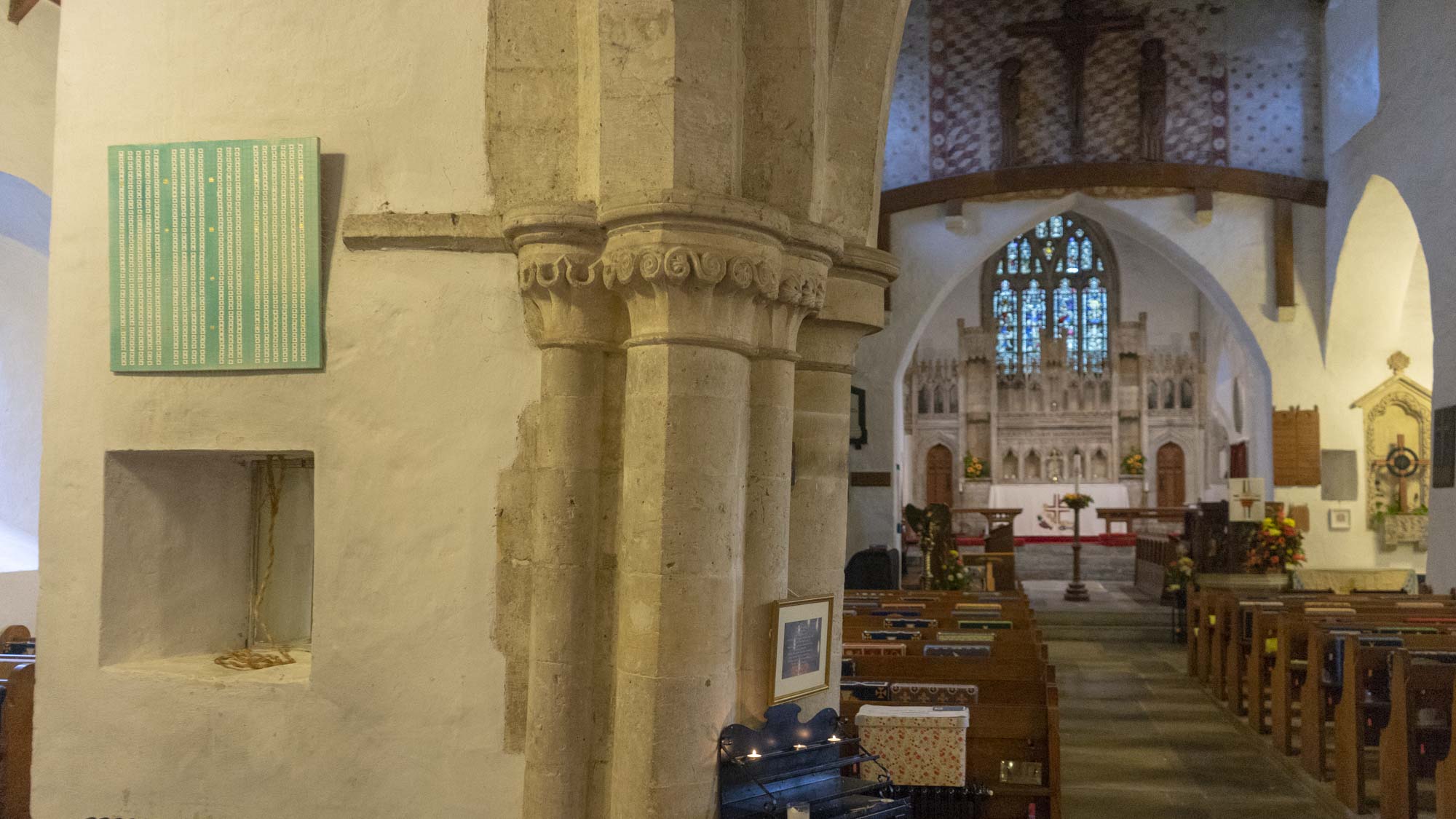
The East Church
Through the glass doorway, past the medieval stone font and down into the East Church. This was built in the 13th Century (Norman) and originally used for worship just by the monks or canons who lived here. It’s the part that’s recognisable as a ‘traditional’ church, though in medieval times there would have been no seating or wooden pews. It contains treasures that survived the purges of the Reformation (1520) and the Puritans (17th Century), such as the rare medieval carved stone Jesse Niche showing the ancestry of Christ and the medieval stone mensa (altar) carved with 5 consecration crosses (which was recovered from the churchyard in 1905). The medieval wall paintings painted over during the Reformation were uncovered in late 19th Century restoration projects. They include paintings of St Christopher, Mary Magdalene, rare flowers, and the rood pattern of cubes above the entrance to the chancel. The walls here have born witness to thousands of voices and sounds – John Wesley, the Methodist Evangelist, preached here in 1777 and the church organ was donated after a fundraising event in 1898, where it was played by Gabriel Faure. This place, with all these threads and ideas literally running through it, connects us through 15 centuries with stories and journeys and very human presence.
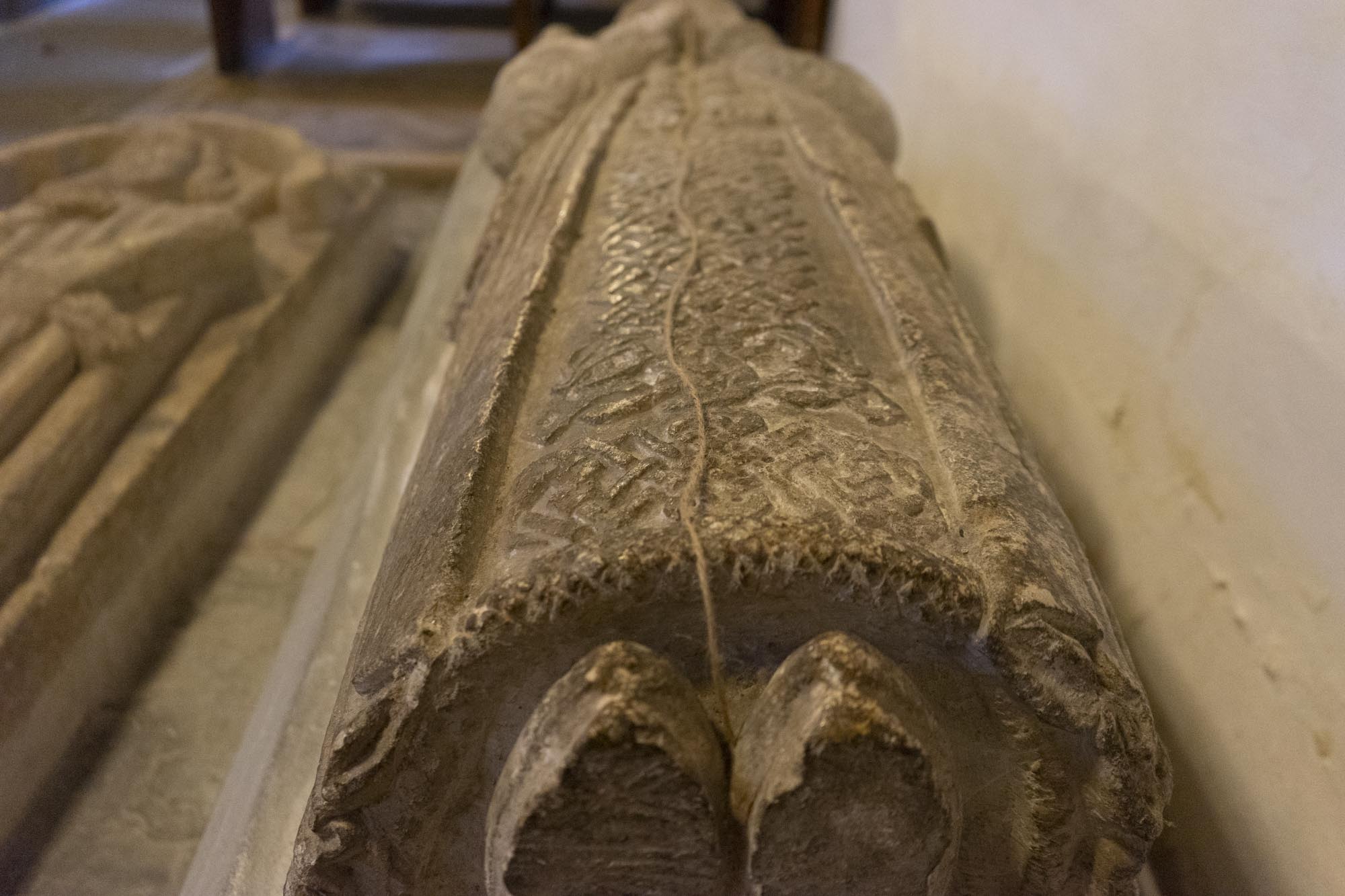
The Exhibition Mini-Pilgrimage
Each time this exhibition moves, it changes and evolves. I love this aspect of touring the work and installing it in different spaces, so far all deeply spiritual ones. At Llantwit Major, as with the other places we’ve travelled to, it’s not just the building or architecture that has an influence on how the show is hung, it’s the Father! Father Edwin, like Father Mark and Father Tom in Abergavenny and Father Ian in Swansea knows his church inside out – and he knows his congregation too. I get the impression he likes to challenge them a little and nudge them into slightly unfamiliar territory on a frequent basis – through music and poetry and art, through readings and community events and bowls of shared (delicious) soups and cups of tea.
So, The Map of Mundi is now floating above the glass threshold between the West Church and the East Church. By day it looks ‘normal’ – or as normal as 286 human lengths of string spiralled and stitched into translucent paper envelopes can look. And as it daylight fades, Edwin has a whole series of coloured (disco?) lights to play with! Pinks, greens and purples can now illuminate and shine through the spirals. Edwin also mentioned ‘haze’ which I think is like a smoke machine but creating a more misty and subtle effect – I can’t wait to see it!
The other works in the exhibition are all in the East Church. They are placed deliberately in places where there are other things to rediscover in the church – things people may not have noticed or ventured towards otherwise. it’s a circular pilgrimage going clockwise through the church. We are hoping people are curious enough to want to cross the threshold up to the altar to view the artwork – and in turn notice the nooks and crannies, the glimpses of medieval wall paintings, the carvings, niches, screens, beams, words, windows and doors… all sorts of treasures.
“When you change the way you look at things, the things you look at change”
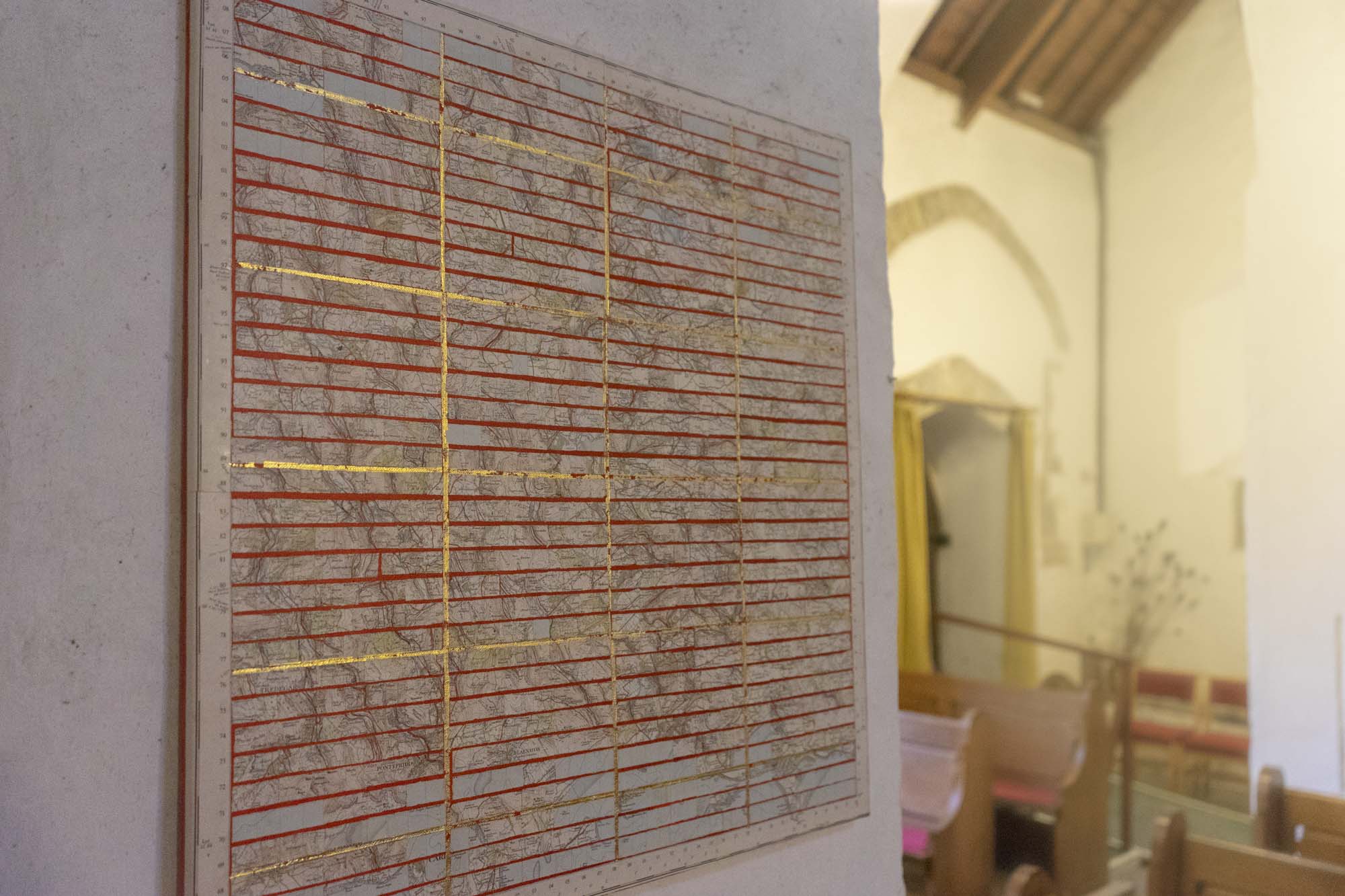
Keep on Keeping On…
The exhibition continues at St Illtud’s, Llantwit Major, until the end of November 2018.

